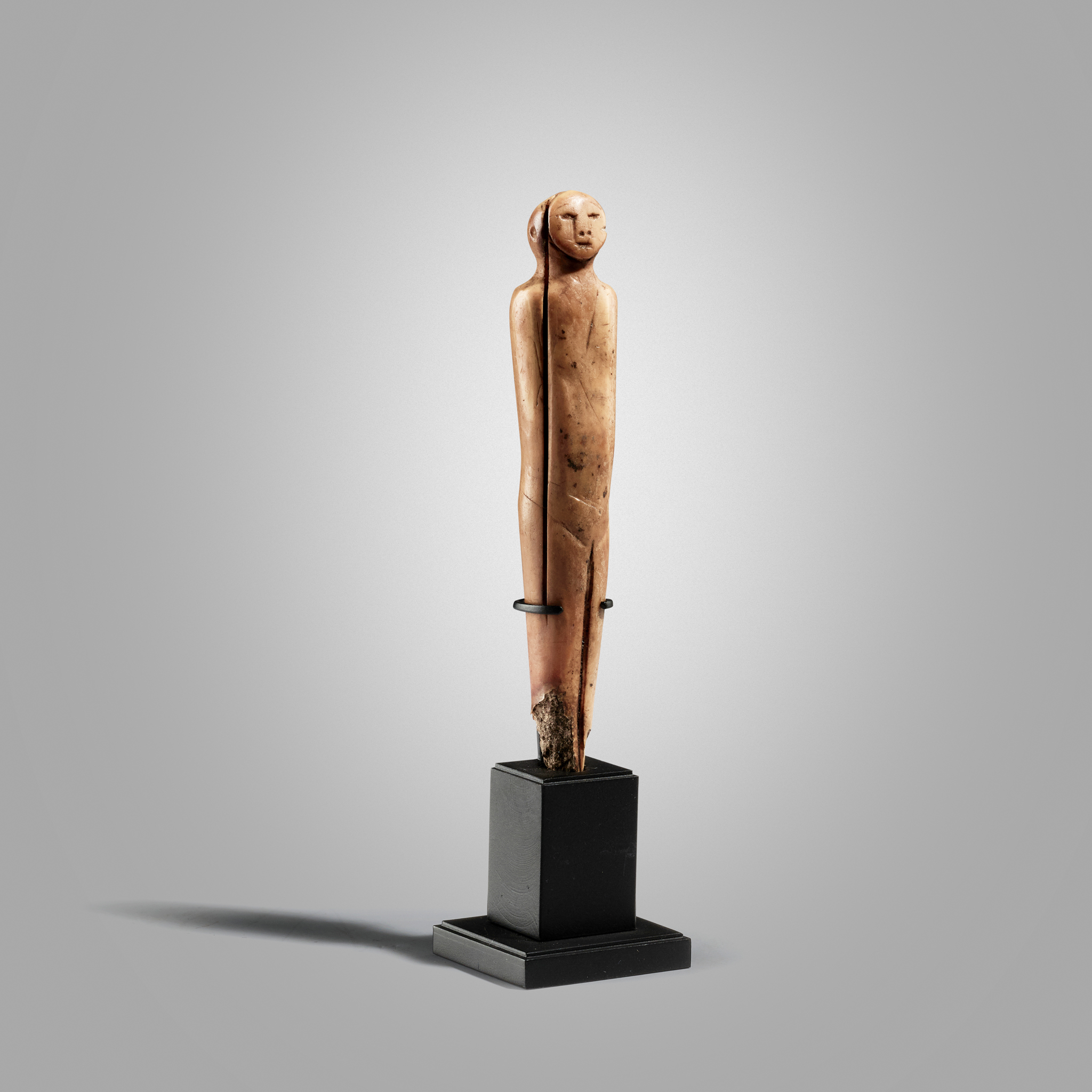INUIT THULE FIGURE
ST LAWRENCE ISLAND, ALASKA, EARLY 1ST MILLENNIUM A.D.
Estimate: £3,500 - £4,500
Auction: 13 March 2025 from 13:00 GMT
Description
carved marine ivory, the figure shown standing, the arms hidden, the head slightly turned and with scarification to the cheeks, raised on a bespoke mount
Dimensions
8.2cm tall
Provenance
Private collection, St. Lawrence Island, Alaska
Private collection, Belgium
Footnote
Thule culture, flourishing from approximately 200 B.C. to 1500 A.D., is recognised as the precursor to modern Inuit societies across the Arctic regions. Their artistic expressions are predominantly observed in utilitarian objects such as combs, needle cases, and various utensils, which often feature minimalistic designs and delicate incisions. A notable aspect of Thule artistry is the creation of small, elegantly shaped female figurines, typically carved from ivory or wood. These statuettes are characterised by their elongated forms, broad shoulders with truncated arms, and minimal facial features, often lacking detailed facial carvings. The exact purpose of these figures remains a subject of scholarly debate; some suggest they served as amulets imbued with spiritual significance, while others propose they functioned as dolls, possibly dressed and used in social or ceremonial contexts.

